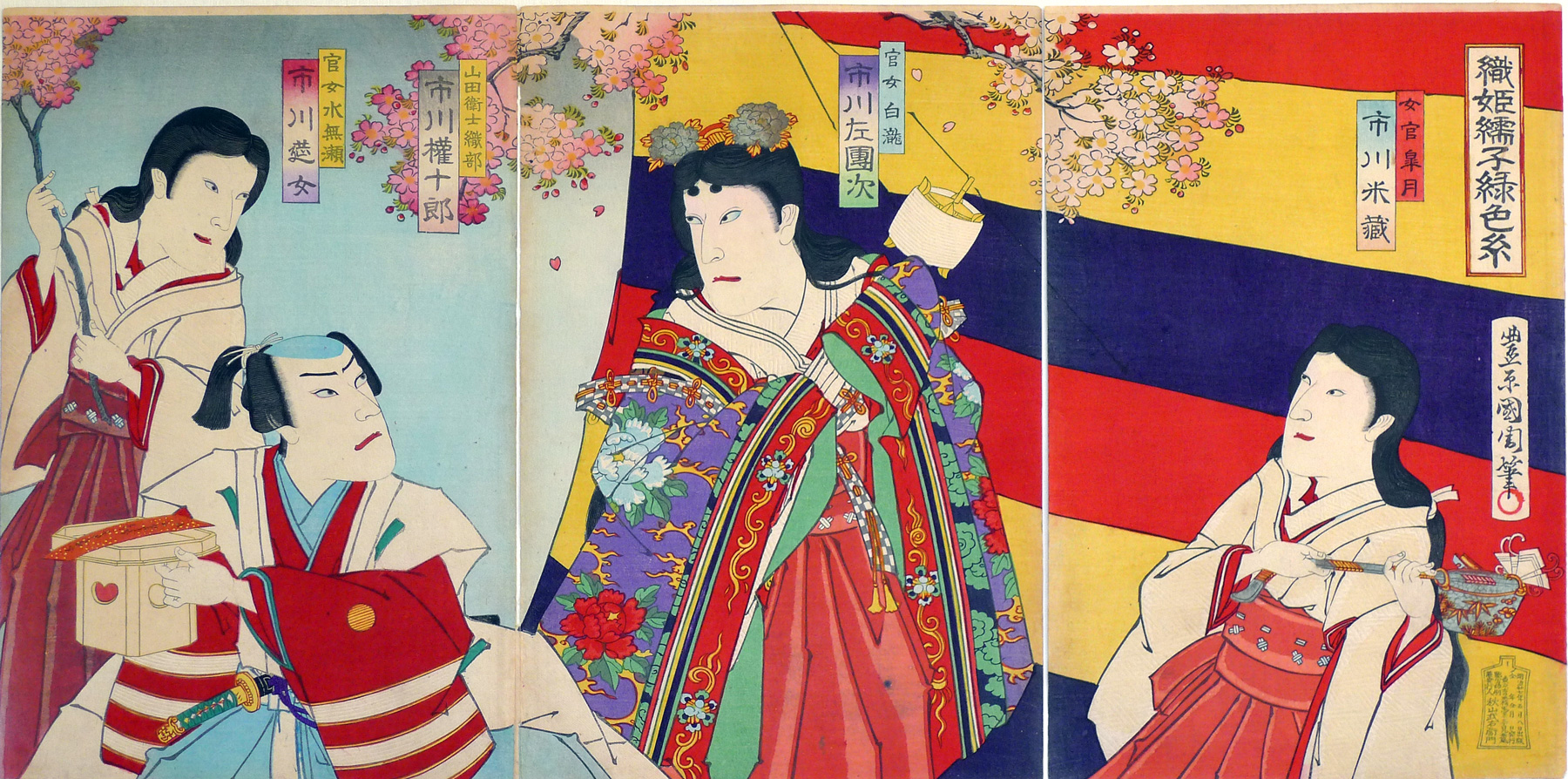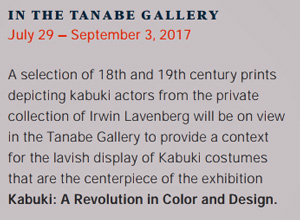About This Print
The actors, from right to left, Ichikawa Yonezō (市川米蔵) as court lady Satsuki (女官皐月), Ichikawa Sadanji II (市川左団次) as court lady Shirotaki (官女白瀧), Ichikawa Gonjūrō (市川権十郎) as Eiji Yamada Oribe (山田衛士織部) and Ichikawa Enjō (市川莚女) as court lady Minase (官女水無瀬) in Orihime no Shusu Enishi no Iroito performed at the Meiji-za in the second week of May 1894.This play was created to publicize a new "domestically-produced black satin product, 'Orihime Shusu', to replace the imported satin 'Nanking-Shusu'" then in vogue."1 The stage curtain was provided by Inabata Shoten who, along with Nippon Orimono (Japan Textile Company), commercialized the new product.
Caught in the Act: Woodblock Kabuki Prints from the Lavenberg Collection of Japanese Prints
July 29 - September 3, 2017 in the Tanabe Gallery at the Portland Japanese Garden

become Tokyo, when Japan was modernizing rapidly. New technology introduced from the West meant the introduction of brilliant colors derived from synthetic dyes that smacked of evolving times. Even so, traditions in kabuki print design remained: details masterfully rendered; cartouches giving the actor's name and role; the action unfolding across multiple sheets of paper.
1 website of Inabata & Co http://www.inabata.co.jp/english/amusebouche/ikhistory/history01.html
The Actors Pictured
For background on the actors Ichikawa Yonezō (dates unknown), Ichikawa Sadanji I (1842-1904), Ichikawa Gonjūrō (1848-1904) and Ichikawa Enjō (1868-1944) see their respective entries in the article The Kabuki Actor on this site.Print Details
| IHL Catalog | #751 |
| Title (Description) | Orihime no Shusu Enishi no Iroito 織姫繻子縁色糸 Ties of Colored Threads in the Weaving Princess's Satin |
| Artist | Toyohara Kunichika (1835–1900) |
| Signature | Toyohara Kunichika hitsu with toshidama seal |
| Seal | toshidama seal |
| Publication Date | May 8, 1894 (Meiji 27) |
| Publisher |  |
| Carver | unknown |
| Impression | excellent |
| Colors | excellent |
| Condition | good- trimmed to image on side and bottom margins, soiling |
| Genre | ukiyo-e; yakusha-e |
| Miscellaneous | |
| Format | vertical oban triptych |
| H x W Paper | 13 3/4 x 9 1/4 in. (34.9 x 23.5 cm) each sheet |
| Literature | |
| Collections This Print | The Tsubouchi Memorial Theatre Museum of Waseda University 101-7380, 101-7381, 101-7382 |




